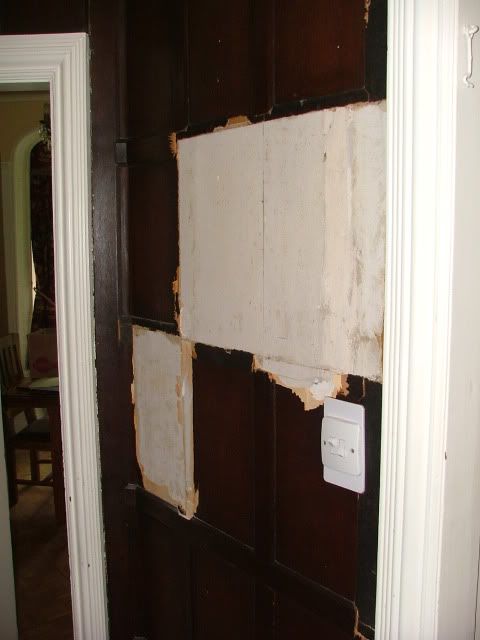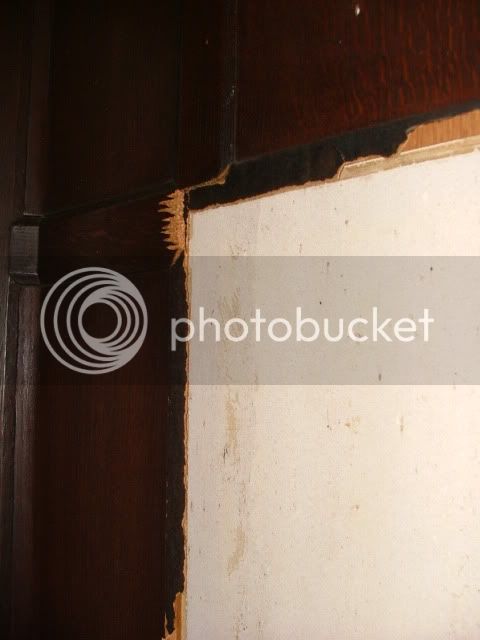BradNaylor
Established Member
- Joined
- 17 Oct 2007
- Messages
- 2,311
- Reaction score
- 2
I've got the job of replacing the oak panelling in the hall of a large Victorian house. This week I've been ripping out the old stuff and discovered that it is not at all what it appears.


It turns out to be oak veneer on a backing paper glued to the wall in small rectangles. Overlaid on this are 'stiles' and 'rails' made from cork veneered with oak. Everything is very nicely jointed together and it looks for all the world like traditional panelling.
I'm intrigued by the whole thing. Has anyone ever come across this kind of stuff before and when does it date from? It is clearly not part of the original house as signs of a previous dado rail are visible underneath. My guess is that it is from the 1930's but I really have no idea.
Any offers?
Cheers
Brad


It turns out to be oak veneer on a backing paper glued to the wall in small rectangles. Overlaid on this are 'stiles' and 'rails' made from cork veneered with oak. Everything is very nicely jointed together and it looks for all the world like traditional panelling.
I'm intrigued by the whole thing. Has anyone ever come across this kind of stuff before and when does it date from? It is clearly not part of the original house as signs of a previous dado rail are visible underneath. My guess is that it is from the 1930's but I really have no idea.
Any offers?
Cheers
Brad




